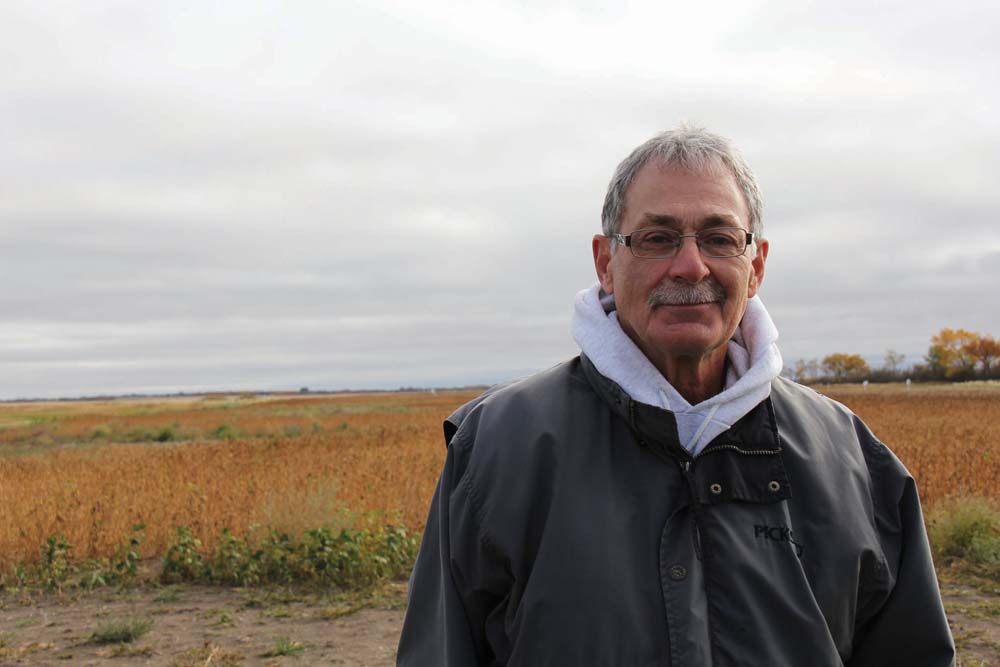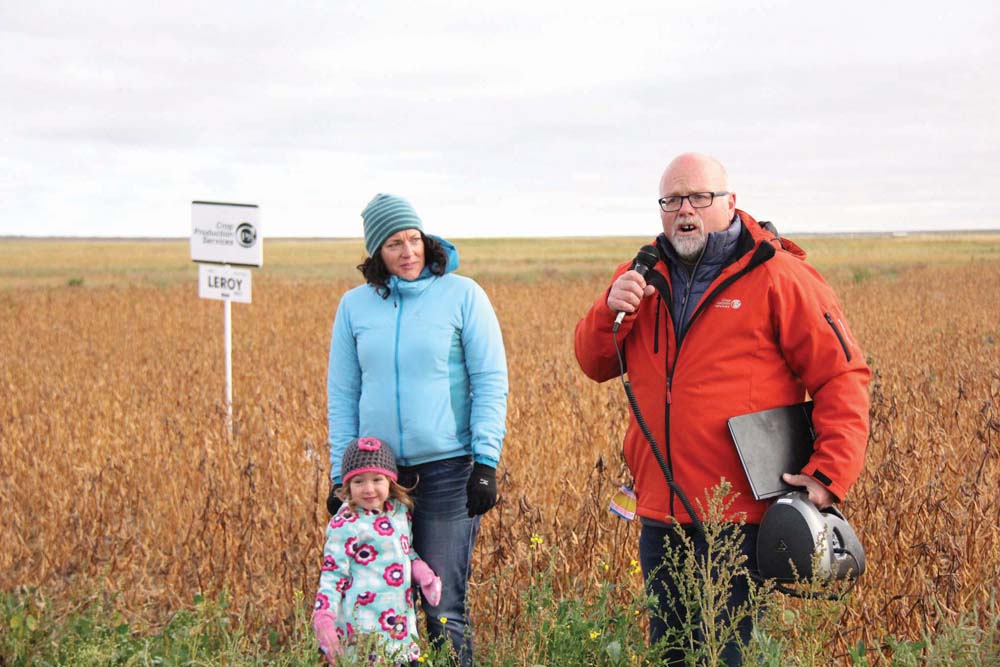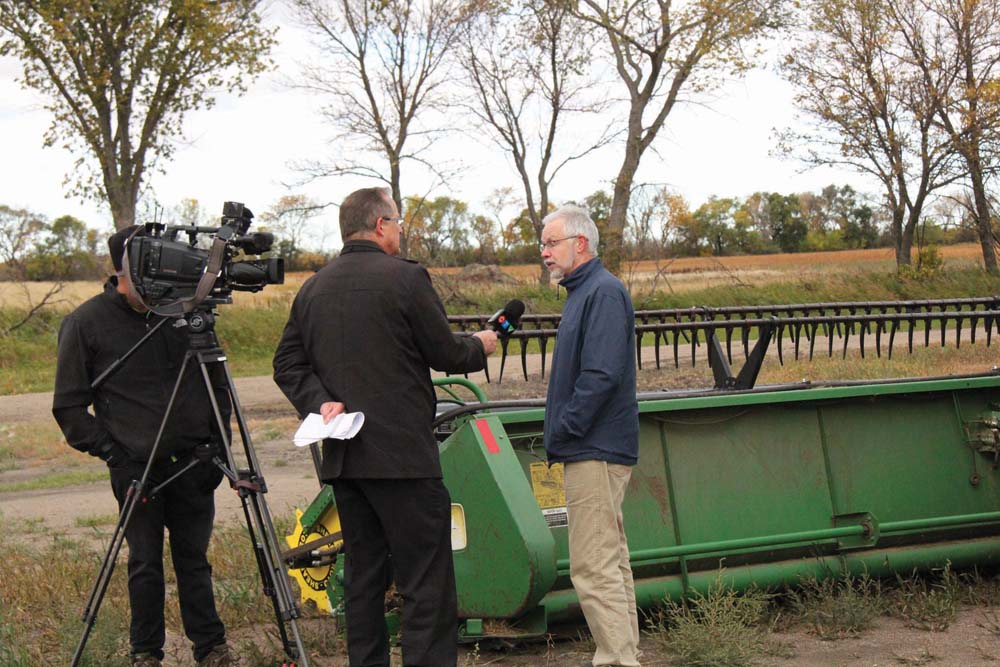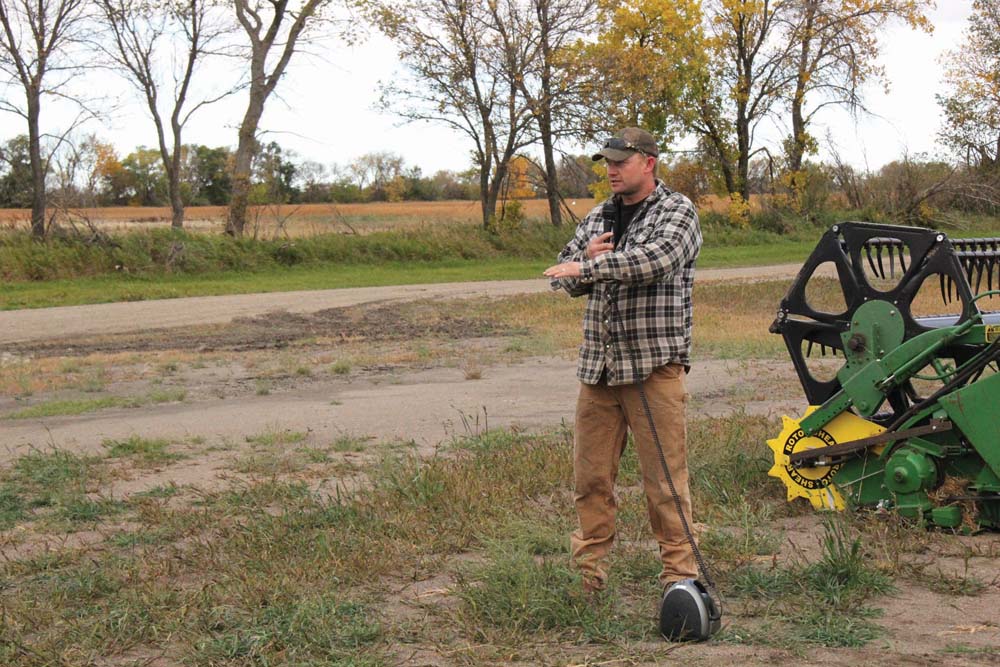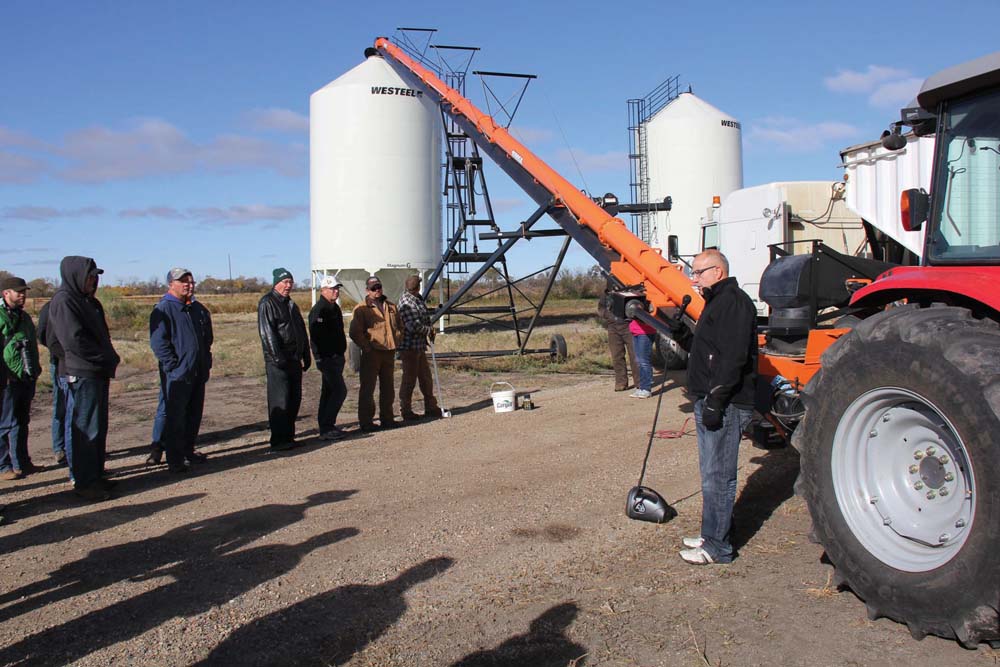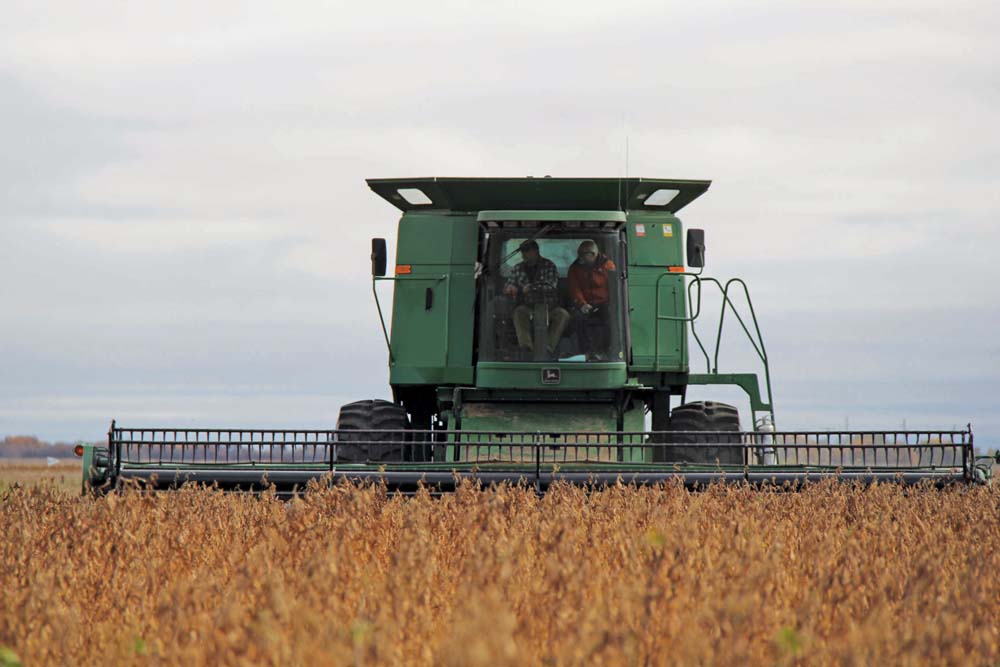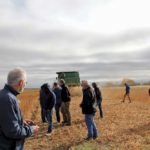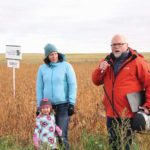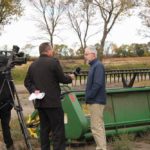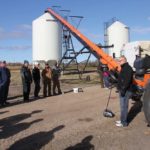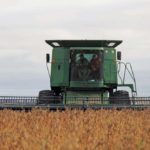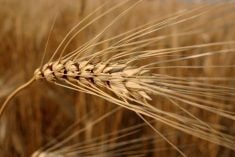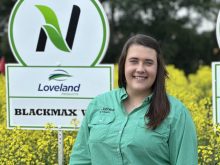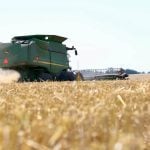
Farmers and industry take a.jpg
Farmers and industry reps take a look at what’s left behind the combine on the soybean plot. Some of the best soybeans are the lowest on the plant, so the cutterbar needs to be as low as possible.
Photo: Lisa Guenther
Gaylord Mierau_cmyk.jpg
Gaylord Mierau, a Langham-area farmer, seeded, harrowed and sprayed about 90 acres of soybeans for the Canadian Foodgrains Bank on the Ag in Motion site this year. This was Mierau’s first year growing soybeans. “At times it was too dry. But considering that, the crop looks reasonable.”
Photo: Lisa Guenther
Jennifer Bogdan and Gary So.jpg
Jennifer Bogdan and Gary Sollid of Crop Production Services talk soybean agronomy at the Ag in Motion site north of Langham. Also pictured is Jennifer’s three-year-old daughter, Katla, who enjoys long walks through soybean fields.
Photo: Lisa Guenther
John Longhurst_cmyk.jpg
John Longhurst, director of resource and public engagement for the Canadian Foodgrains Bank, speaks to local media at the harvest event on October 3rd. There were 26 growing projects in Saskatchewan alone and over 250 across Canada. Proceeds from those projects will go to the Canadian Foodgrains Bank.
Photo: Lisa Guenther
Langham-area farmer David M.jpg
Langham-area farmer David Meakin talks about his experience growing and harvesting soybeans during the Canadian Foodgrains Bank harvest event.
Photo: Lisa Guenther
Dan Bardi of Ag Growth_cmyk.jpg
Dan Bardi of Ag Growth International talks soybean handling and storage with farmers and industry.
Photo: Lisa Guenther
David Meakin finishes a sec.jpg
David Meakin finishes a second pass on the soybeans, with Gary Sollid riding shotgun.
Photo: Lisa Guenther
On the morning of October 3, about 30 hardy souls braved finger-numbing cold to celebrate the Canadian Foodgrains Bank harvest at the Ag in Motion site north of Langham, Sask.
The soybeans were a little tough, and so only a few acres were harvested for demonstration purposes. But close to 90 acres of soybeans were seeded and awaiting harvest, with the proceeds to be donated to the Canadian Foodgrains Bank. The day also included talks about soybean agronomy, handling, and storage.
Gaylord Mierau, a Langham-area farmer, seeded, harrowed and sprayed the soybeans on the Ag in Motion site. Crop Production Services provided agronomic advice and inputs, and Ag Growth International provided storage and handling equipment for the crop.
Read Also

Claas brings 1000 Series SP forage harvesters to Canada
In mid-August, Claas unveiled its new line of Jaguar forage harvesters at an event in Visalia, California, deep in the heart of that state’s dairy region.
Mierau is a long-time donour to the Canadian Foodgrains Bank. For the past seven years he has also grown about 80 acres of various crops for the organization on his own land.
Mierau says he is passionate about Canadian Foodgrains Bank’s work to end hunger. He draws much of his inspiration from his two-year-old granddaughter, Alice.
“Alice loves to eat. And I love to watch her eat because she just enjoys her food so much. And it would break my heart if her parents had little or nothing for her to eat.” Unfortunately, that is the reality for millions of people each year, Mierau adds.
Mierau says he is also motivated by teachings in the New Testament, which is in keeping with Canadian Foodgrains Bank’s vision. The organization is a partnership of 15 Canadian churches and church-based agencies, which together represent 30 denominations.
Canadian Foodgrains Bank’s projects fall into three categories; providing food to people facing famine because of a crisis, sustainable agricultural projects designed to help people boost yields and earn more money from their crops, and nutrition projects focusing on nursing or pregnant mothers and young children.
About half the donations received by the Canadian Foodgrains Bank come from growing projects such as the one at the Ag in Motion site. Farmers dedicate acreage to grow a crop, harvest it, sell it, and donate the proceeds to the Canadian Foodgrains Bank.
This year, there were over 250 growing projects across Canada, says John Longhurst, director of resource and public engagement for the organization. Those growing projects range in size from garden plots to 500 acres, he adds.
The Canadian government matches the funds raised by the Canadian Foodgrains Bank. Longhurst says the portion the federal government kicks in depends on the project type. The proceeds from the Ag in Motion site are slated for emergency famine relief in Africa, and the government will quadruple the money raised from the soybean sales.


